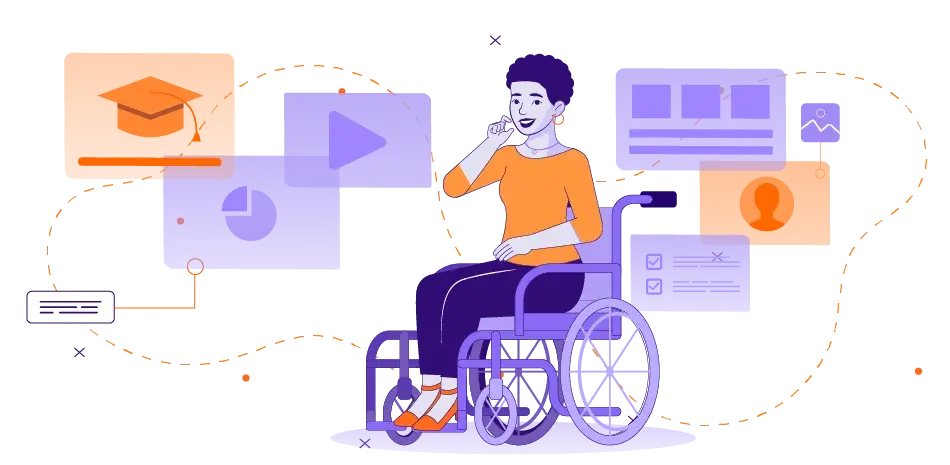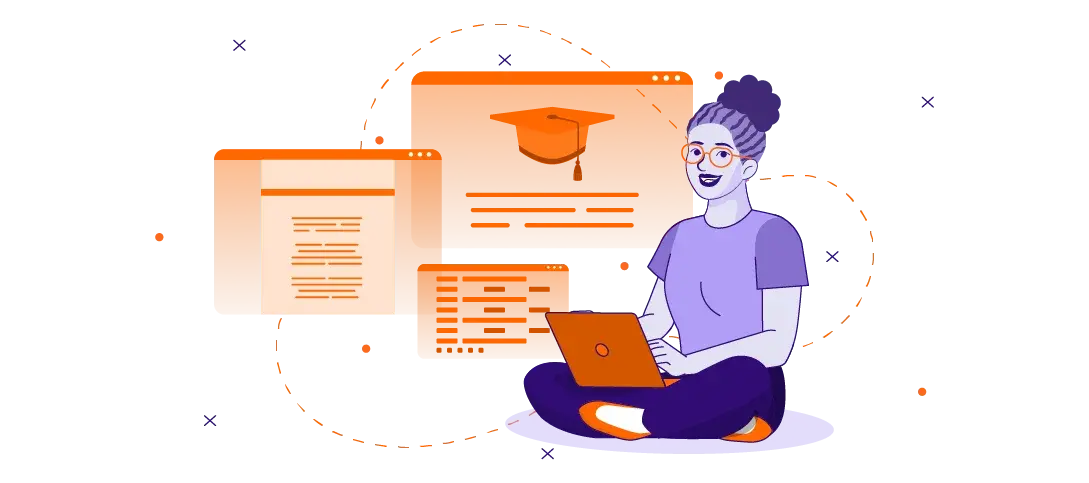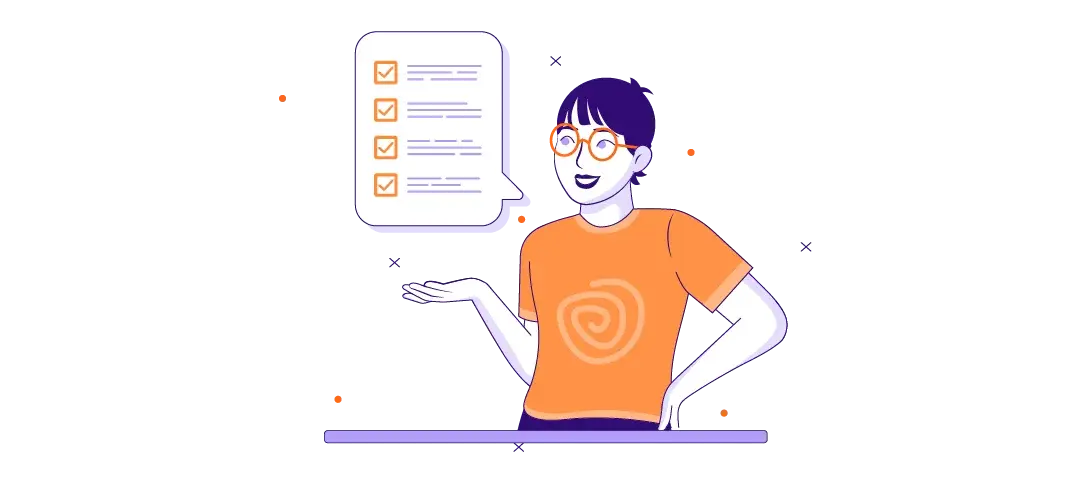
11 Best Microlearning Examples to Inspire You in 2023
Full-blown training courses are quickly becoming a thing of the past.
With low attention spans becoming a real problem in the 21st century, many organizations and companies are opting to switch to a simpler learning method that keeps learners engaged and promotes memory retention.
Enter Microlearning!
It’s the next evolutionary step to digital learning, where learning materials are broken down into small chunks to make them easier to consume.
There are many shining microlearning examples that you can find around you. And if you’re looking for some inspiration, we have you covered.
But before we get to the examples, let’s take a step back and look at what microlearning is all about!
Ready?
Let’s get started!
What is Microlearning Content?
Microlearning content refers to small, focused learning materials that are designed to deliver specific pieces of information or knowledge to make it easier to digest. Modern learners have limited time and attention span, and microlearning content is designed to combat that.
Each piece of microlearning content focuses on a single learning objective or concept. And since the entire lesson lasts around 5 to 15 minutes, it’s easier for the learner to engage with it in their free time.
Infographics, microlearning videos, quizzes, games, etc., are commonly used as part of a microlearning program. The key to creating a great microlearning curriculum is to understand the learner and their learning objective.
If you want to set up microlearning curriculum for your business, start with a free consultation with us.
Why Microlearning?
Effective employee training is an essential part of any company, whether it’s health and safety training, language training, or product training. But when you’re focusing on a larger topic, it can easily get in the way of getting a specific learning outcome.
With microlearning, you can focus on a specific topic without taking up too much of your company’s time or resources. Your employees are also more likely to retain the information that they pick up from microlearning courses since the information is short and concise.
Key Benefits of Microlearning
There are numerous benefits to adopting a microlearning course structure, whether it’s for business or non-profit organizations. Here are some of its key advantages:
Improves Knowledge Retention
Since the information is delivered in short bursts, it’s easier for the learner to retain the new knowledge. It also improves the learner’s motivation since it’s easier to achieve their learning milestones. And since the lessons are shorter, the learners are more likely to complete them.
Scalability
Microlearning videos or content can help your business scale better in two ways:
-
- As your company grows, so will the need for more training and learning due to new and unforeseen challenges. You can quickly add more training content to your existing microlearning modules. So, the course itself is easily scalable.
- Also, quick bursts of microlearning content can help your employees stay on top of their game! The equation is simple: highly-trained employees = better employees = increased scalability!
Flexible Learning
Microlearning can be accessed anywhere, anytime, and from any device. As a result, the learner has complete flexibility to learn at their own pace. And since the lessons take no longer than 15 minutes, they won’t take up too much of their free time.
It’s Affordable
Creating engaging and effective microlearning content is a lot cheaper compared to longer training content. Yes – there’s a lot to learn when you want to create microlearning content for the best learning outcome, but since the content is shorter, it will take fewer company resources to produce.

Microlearning video Examples in 2023
Learning strategies have evolved to accommodate shifting learner dynamics. Organizations are progressively incorporating eLearning videos into their corporate training methods to enhance the learning experience for individuals. The fusion of Microlearning techniques with eLearning videos significantly elevates their impact to an unprecedented level. Here are 5 examples:
Healthcare Industry
In this field, where precision and understanding are critical, microlearning enables medical personnel to grasp complex subjects efficiently. Its bite-sized modules offer concise, focused, and easily digestible content, simplifying medical topics and procedures.
Retail Industry
Microlearning videos revolutionize retail employee training by delivering targeted, bite-sized content tailored to specific retail scenarios. These concise modules offer quick, accessible learning on crucial topics such as customer service, product knowledge, and sales techniques. Check out this example:
Mental Health
The importance of mental health awareness and support is paramount, and microlearning videos serve as an accessible gateway to mental health content, available anytime and anywhere. Their bite-sized format offers quick access to essential information, making mental health resources readily available for individuals on-the-go promoting education and fostering well-being in our daily lives.
Cybersecurity Industry
Microlearning videos serve as invaluable tools in cybersecurity training, effectively raising awareness and educating both companies and the general public on cyber threats. These concise videos spotlight critical cybersecurity practices and highlight common pitfalls to avoid, empowering individuals with the knowledge to recognize and thwart potential cyber risks.
11 Microlearning Examples for Modern Learners in 2023
Over the years, many platforms and applications have adopted innovative learning strategies to keep their users engaged. Here are 11 prime examples of microlearning to help inspire you!
1. Drops (Language App)
Overcoming language barriers is a big challenge for any work environment. But microlearning language apps such as Drops have made it much easier for workers to pick up a new language for use in the workplace.
With the option to choose from over 30 languages, including English, Chinese, Spanish, German, Russian, and French, people have an easier time learning how to better communicate with each other. And since it’s a mobile learning solution, anyone can access it any time of the day, whether during their lunch break or when they go home.
The simple design of the app, along with its utilization of mnemonic devices such as matching words to images, is a fantastic example of how amazing micro lessons can be.
2. Fire Extinguisher Instructions
Microlearning is everywhere, and if you take a closer look at your surroundings, you’ll find it being used in your everyday life. The first extinguisher you probably have in your apartment building or workplace is a solid example of how microlearning can help you master a skill quickly and efficiently.
Besides most fire extinguishers, you’ll see a pictogram depicting how you can use it. There should be four images with basic illustrations of how you can use the fire extinguisher. So if there’s a fire in the vicinity, you’ll be able to use the fire extinguisher to put it out by following the instructions, even if you’ve never used one before.
3. Product Knowledge Training Sessions
Nowadays, people are more emotionally stimulated by information and multimedia than ever before, and it’s only when they have an emotional response that they truly remember it. Otherwise, it’s just another piece of information among the countless incoming information in our minds on a daily basis.
Interactive eLearning takes this idea and runs with it by incorporating different elements that evoke emotion in the learner: meaningful stories, interesting visuals, powerful value statements, shocking statistics, confrontational questions, and more. And when emotions are involved, attention is held, action is taken, and behavior is changed.
4. Headspace
Studies indicate that meditation has a positive effect on productivity and performance. But finding time to meditate once a day can be difficult between managing your social and work life. With apps like Headspace, though, finding time to meditate becomes much easier.
It’s an extremely popular mindfulness and meditation platform. Headspace helps its users manage stress and improve focus by delivering guided meditation sessions, mindfulness exercises, and other related content.
Its vast library of guided meditation sessions on different themes and topics like stress, sleep, and anxiety lets the user pick specific topics that help them the most. In addition to structured courses, the “Singles” and “Minis” sessions offer standalone exercises centered around specific scenarios.
Short bursts of guided meditation sessions in Headspace let the user manage their stress more effectively without compromising their busy schedules.
5. Bulleted List Slides
Bulleted list slides are commonly used in presentations. And it can serve as an effective way to convey concise information in an easy-to-digest manner.
Bulleted lists give the learner a visual summary of the key takeaways of a presentation. Each bullet point in a bulleted list slide represents a separate chunk of information. The use of bullet points makes it easy for the recipient to grasp the essential concepts easily.
This format of letting the learner process information by breaking it down into manageable pieces is what microlearning is all about.
6. Memrise
Memrise, similar to Drops, is a language learning platform that breaks down the learning process into small chunks to improve knowledge retention. Its structured approach to learning languages and expanding vocabulary through short, focused study sessions is a prime example of the microlearning approach.
Memrise utilizes spaced repetition, digital flashcards, audio pronunciation, and many other devices to streamline the learning experience. The interactive quizzes and games also help the users learn and retain information easier.
There’s also a smartphone app. So users can engage with the content anytime they want from their mobile devices. In addition to official language courses, Memrise allows users to create their own sets and courses, giving them complete control over their learning materials.
7. Quizlet
Quizlet is another great example of microlearning, giving you a versatile platform for study. It incorporates interactive study tools like flashcards, games, quizzes, and diagrams and helps learners break down complicated topics into smaller bite-sized chunks that are easier to digest.
Since Quizlet’s flashcards and quizzes are short and focused on a single topic, it enables learning during brief breaks. As a result, it’s easier for students to fit learning into their daily routines.
With Quizlet, students can create microlearning materials that cater to their specific learning preferences easily, thanks to its customizable design.
8. Blinkist
For book lovers and curious spirits who don’t have enough time to go through an entire book, Blinkist is the perfect solution. Blinkist condenses the contents of a book into a 15-minute audio summary that you can listen to in your free time.
The app contains a huge library (over 2500 books) of nonfiction and educational books for you to choose from. And it’s also updated with 40 new titles each month to ensure the users will always have something new to read.
The Focus On This Podcast is different from all the other examples we’ve given you so far. It’s a podcast that aims to improve your focus, manage stress, and boost productivity. The Focus on This Podcast uses The Full Focus Planner by Michael Hyatt as its foundation.
It has over 400 episodes so far, and each episode talks about productivity practices, goal achievement, calendar management, and other similar topics. The episodes are longer than traditional microlearning lessons ranging from 25 to 35 minutes in general.
10. Trivia Crack 2
Trivia Crack 2 is an interesting example of microlearning through gamification. It’s a mobile game that quizzes you on various topics such as science, history, entertainment, and many more. The instant feedback system allows the users immediately identify the right or wrong answers.
The app uses a spaced repetition process by cycling through the questions in different categories. Players can compete with their friends or other users giving them a sense of competition and achievement.
And since the game includes nice visuals and animations, it keeps the players engaged while helping them learn new information at the same time.
11. Anki Flashcards
Anki is a flashcard-based software that utilizes spaced repetition to help the learner memorize facts and new knowledge. It breaks down information into bite-sized chunks to improve memory retention. Each card focuses on a singular concept or term, which is in line with the microlearning approach.
The platform utilizes a spaced repetition algorithm as its microlearning strategy to optimize the learning outcome. Cards are cycled at increasing intervals so that the information is reinforced just before it fades from memory.
Since it supports different content types like images, audio, and text, the learner has complete freedom to go with their preferred learning method. The efficient spaced repetition method of Anki is a great example of how microlearning can make knowledge consumption easier.

Final Thoughts: Examples of Microlearning
There are thousands of great examples of microlearning everywhere around you, and you really don’t have to look far for inspiration. It’s quickly becoming the new norm in the modern world, where learners don’t have enough time to sit through full-sized courses.
Filling up your knowledge gaps and picking up new skills has never been easier!
So if our list of microlearning examples could inspire you to produce your own content for training employees, Why not book a consultation with us? It’s the first step to streamlining your training.
DOWNLOAD YOUR KEY TO KNOWLEDGE
Access Valuable Resources to Fuel Your Learning Journey



